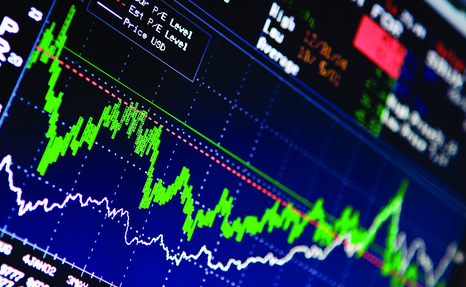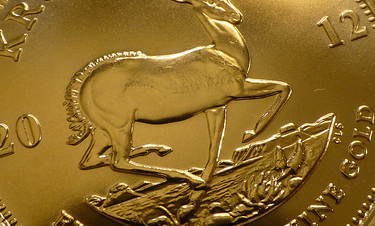Nyheter
David Hargreaves on Precious Metals, week 39 2013

 On a week-to-week basis, gold holds steady in the water at $1300-1350 whilst the occasional daily knee-jerk of up to $40 in either direction fuels the bulls and bears in equal measure. At the risk of boring, we maintain that a median price of $1200, possibly even $1000, is affected by two factors: the direction of the US economy and the Middle East political cauldron. The latter is taking a breather. President Obama is talking to the Iranians. It will terrify the Israelis, but as Churchill said, “Jaw, jaw is better than war, war.” The Syrian conflict takes on a more ominous twist. There is no stomach from the US or its junior partner, Britain, to go in mob-handed. Perhaps just as well because nobody understands any more what the rebels are about. The fear is they side with Al Qaeda. America shilly-shallied regarding once more the volume, timing and direction of quantitative easing, too. It has brought out the heavyweights, whose consensus includes:
On a week-to-week basis, gold holds steady in the water at $1300-1350 whilst the occasional daily knee-jerk of up to $40 in either direction fuels the bulls and bears in equal measure. At the risk of boring, we maintain that a median price of $1200, possibly even $1000, is affected by two factors: the direction of the US economy and the Middle East political cauldron. The latter is taking a breather. President Obama is talking to the Iranians. It will terrify the Israelis, but as Churchill said, “Jaw, jaw is better than war, war.” The Syrian conflict takes on a more ominous twist. There is no stomach from the US or its junior partner, Britain, to go in mob-handed. Perhaps just as well because nobody understands any more what the rebels are about. The fear is they side with Al Qaeda. America shilly-shallied regarding once more the volume, timing and direction of quantitative easing, too. It has brought out the heavyweights, whose consensus includes:
- David Morgan. He says if gold touched $1000, it would still be in an uptrend, since it spent years at $300-400. He looks for silver perhaps hitting $48 (now $21) and calls it ‘the grey metal.’. Oh dear.
- GFMS looks for gold below $1300 in 2014, to average $1350 with support at $1200-1250. It stresses the growing Chinese influence and so does WIM.
- Goldman Sachs is not shy when it comes to forecasting and, looking at a ‘medium term’ forecast of $1050, suggests producers start to hedge again. As Mineweb points out, the power of Goldman could help fulfil the prophesy.
- Mining Journal goes along with the downward pressure, too. Correspondent Tim Treadgold notes:
– Strikes in RSA are no longer consequential.
– A strong US economy drives the price down
– Large sections of the financial economy have turned against gold.
- The Mining Journal Gold Seminar, held September 6th, which David Hargreaves chaired, inclined towards caution, too, but not depression. A consensus thought: “buying and general interest is moving from West to East. India, long the dominant consumer, is at a crossroads on balance of payments concerns. China is the dark horse. A report on the seminar appeared in J/J September 20th. If you would like a copy, contact WIM.
- But all is not gloom. Rhona O’Connell of Thompson Reuters notes jewellery fabrication at its highest level in 16 years and production is edging up. She looks for $1500 at the start of next year, but a $1350 average.
- Sprott Asset Management is an unrepentant bull. Leaning back on the performance of 1974-76-80 which make startling reading, it looks for possibly $2000.
WIM says: We stick with our well publicised view that in a market devoid of political pressures, $1000 would be an OK level. Above that, $500 would be added depending on the severity. It makes a punt on the metal preferable to the shares. China’s gold production, already the world’s largest, advanced 11.5% year-on-year in the January-July 2013 period to 232t, including scrap. It indicates 400t of mined output for 2013.
Platinum. We tire of South Africa’s labour problems, dalliance over licences and dithering over a clear road map for foreign investment. Thus its continued strikes are beginning to bore. It is having no material effect on the platinum price, despite that country having the lion’s share of reserves and production. The price ratio to gold has now slipped to 1.06 from a high above 1.14. Workers are turning down an above-inflation 8% wage increase and continuing to strike as the two unions, NUM and AMCU, slug it out. Learn the hard way then, but it is no way to run a show.
[hr]
About David Hargreaves
David Hargreaves is a mining engineer with over forty years of senior experience in the industry. After qualifying in coal mining he worked in the iron ore mines of Quebec and Northwest Ontario before diversifying into other bulk minerals including bauxite. He was Head of Research for stockbrokers James Capel in London from 1974 to 1977 and voted Mining Analyst of the year on three successive occasions.
Since forming his own metals broking and research company in 1977, he has successfully promoted and been a director of several public companies. He currently writes “The Week in Mining”, an incisive review of world mining events, for stockbrokers WH Ireland. David’s research pays particular attention to steel via the iron ore and coal supply industries. He is a Chartered Mining Engineer, Fellow of the Geological Society and the Institute of Mining, Minerals and Materials, and a Member of the Royal Institution. His textbook, “The World Index of Resources and Population” accurately predicted the exponential rise in demand for steel industry products.
Nyheter
Meta bygger ett AI-datacenter på 5 GW och 2,25 GW gaskraftverk

För en månad sedan berättade Meta att de ska bygga ett AI-datacenter kallat Hyperion i Louisiana och att det ska vara på hela 5 GW. För att sätta det i relation till något så är 1 GW ungefär vad en stor kärnkraftsreaktor producerar.
Meta satsar sjävklart på kärnkraft, men eftersom man rullar ut GW av datacenter varje år så kan man inte vänta på att kärnkraftverken ska bli klara. Därför satsar Meta på gaskraftverk och nu har man fått klartecken att bygga tre stycken stora sådana på totalt 2,25 GW för att driva sitt Hyperion-datacenter. Gaskraftverken ska vara uppe och producera elektricitet i 2028 och 2029.
Meta planerar även att bygga en hel del solcellsparker i delstaten, vilket dock har skapat en hel del protester. Solcellsparkerna kommer till skillnad från gaskraftverken att vara utspridda runt om i delstaten vilket gör att elektriciteten från dem kommer att behöva färdas via elnätet. Stora företag är rädda att deras satsningar på solceller inte kommer att kunna bli verklighet då elnätet kommer att bli fullt och allmänheten är orolig över att behöva betala för att bygga ut elnätet.
Nyheter
Aker BP gör ett av Norges största oljefynd på ett decennium, stärker resurserna i Yggdrasilområdet
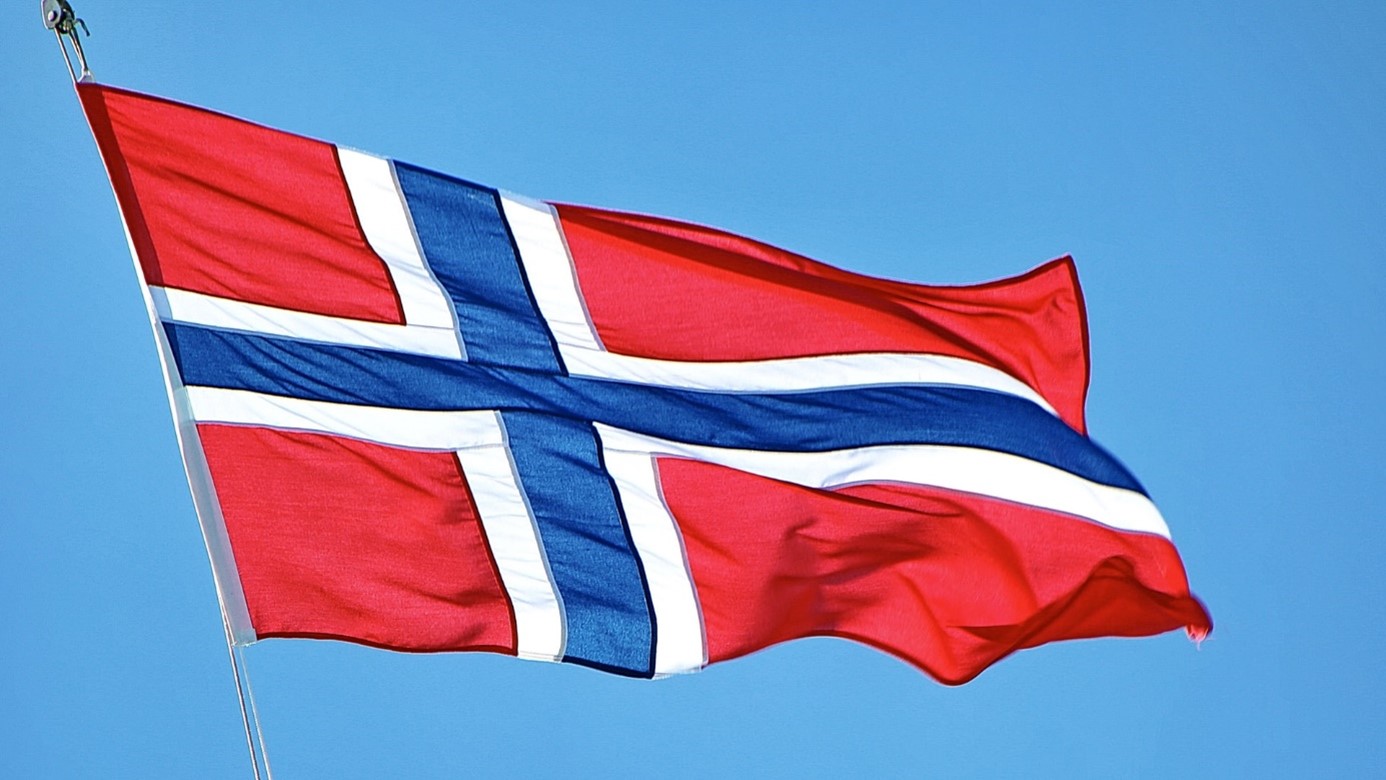
Aker BP har gjort en betydande oljefyndighet i Nordsjön genom sitt prospekteringsprogram Omega Alfa. Bolaget uppskattar de utvinningsbara resurserna till mellan 96 och 134 miljoner fat oljeekvivalenter (mmboe) – vilket gör fyndet till ett av de största kommersiella upptäckterna i Norge under de senaste tio åren.
”Omega Alfa är bland de största fynden i Norge på ett decennium. I kombination med tidigare upptäckter stärker detta vår ambition att producera över en miljard fat från Yggdrasilområdet. Fyndet är också ett bevis på hur nya metoder kan pressa gränserna för norsk offshoreutvinning,” säger Aker BPs vd Karl Johnny Hersvik.
Bygger vidare på East Frigg
Omega Alfa följer på oljefyndet vid East Frigg 2023 och är en viktig byggsten i Aker BPs långsiktiga plan för Yggdrasil. Projektet, som godkändes av norska myndigheter 2023, är den största pågående fältutvecklingen på norsk sockel. Första oljan väntas 2027.
Det nya fyndet stärker resursbasen som idag uppgår till cirka 700 mmboe, med målet att nå över en miljard fat genom fortsatt prospektering.
Tekniska rekord
Explorationskampanjen, som inleddes i maj med borriggen Deepsea Stavanger, omfattade fem mål: Omega, Alfa, Alfa South, Sigma NE och Pi. Totalt borrades 45 000 meter, varav 40 000 meter i reservoarsektioner. Bland höjdpunkterna märks tre av de längsta sidoborrningarna som någonsin genomförts på norsk kontinentalsockel – med en maximal längd på 10 666 meter.
Den avancerade horisontella borrningen möjliggjorde insamling av en omfattande mängd högkvalitativa reservoardata, vilket minskar osäkerheten och påskyndar vägen mot konceptstudier för att knyta fyndet till Yggdrasilfältet.
Partnerskap i projektet
Fyndet ligger inom produktionslicenserna 873, 873 B och 1249. Aker BP är operatör med olika partnerskap där Equinor, Petoro och Orlen Upstream Norway ingår.
Med Omega Alfa stärker Aker BP inte bara sina reserver, utan befäster även Yggdrasilområdets roll som en av de mest betydelsefulla energisatsningarna på norsk sockel under det kommande decenniet.
Nyheter
Sommarens torka kan ge högre elpriser i höst

Efter en varm och torr sommar med låga elpriser ser hösten 2025 ut att kunna ge högre priser än tidigare väntat. Orsaken är ett kraftigt tapp i vattenmagasinen i både Sverige och Norge till följd av flera veckors högtryck och utebliven nederbörd. Det visar elhandelsbolaget Bixias analys av sommarens elprisutveckling.

Sommaren har bjudit på klassiskt högtrycksväder med flera varma veckor i rad, särskilt i norr. Att värmen sammanföll med semesterperioden och därmed en minskad efterfrågan på el bidrog till stabilt låga elpriser. I snitt låg systempriset på el på 28 öre per kWh från midsommar och framåt.
Skillnaderna mellan elområdena har varit stora. I SE1 och SE2 i norra Sverige låg snittpriset på 11 öre, medan SE3, där Stockholm ingår, landade på 29 öre. Högst var priset i SE4 med drygt 40 öre per kWh, trots att import av billig solkraft från kontinenten höll nere priserna.
– Vi har haft en lugn sommar prismässigt på elmarknaden. Men högtrycken har gett både den lägsta vindkraftsproduktionen på hela året och låg nederbörd, vilket syns tydligt i vattenmagasinen. Att hydrologin har försvagats snabbt kan driva upp elpriset i höst, säger Johan Sigvardsson, analytiker på Bixia.
Torr sommar gynnar vattenkraften
Intensiva högtryck innebär att det inte kommer mycket nederbörd. Den hydrologiska balansen försämrades kraftigt i somras – med ett tapp på hela 15 TWh på tre veckor. I SE2, det största vattenkraftsområdet i Sverige, har fyllnadsgraden sjunkit från 92 till 85 procent sedan mitten av juni.
Särskilt mycket har torkan påverkat norska elområdet NO2. Fyllnadsgraden har sjunkit till 55 procent i sommar vilket är hela 20 procentenheter mindre än vad som är normalt för säsongen.
– Torkan i Norge gör att de hårt pressade vattenkraftsproducenterna kan skruva upp sin prissättning en bra bit och närma sig de kontinentala priserna. Norge bidrar till att vi i höst kan få en högre prisbild än vad vi trodde före sommaren, säger Johan Sigvardsson.
Låg vindkraftsproduktion gav andrum
Högtrycket under vecka 28–30 gav mycket svaga vindar, vilket har inneburit årets lägsta vindkraftsproduktion.
– Den svaga vinden gav de hårt pressade vattenkraftsproducenterna ett tillfälligt andrum, efter en längre period med låga priser till följd av den stora vattenmängden i magasinen. Producenterna har haft det tufft både i Sverige och Norge, med låga ensiffriga priser som knappt täcker driftskostnaderna, säger Johan Sigvardsson.
Dyrare höst än väntat
När det var som allra torrast steg elterminerna, som ger en fingervisning om vart elpriset är på väg, tillfälligt till 55 öre per kWh för fjärde kvartalet, men har nu stabiliserats kring 50 öre.
– Terminsmarknaden har inte reagerat särskilt kraftigt än, men en fortsatt torr höst kan få elpriserna att skjuta i höjden, säger Johan Sigvardsson.
-

 Nyheter3 veckor sedan
Nyheter3 veckor sedanKopparpriset i fritt fall i USA efter att tullregler presenterats
-
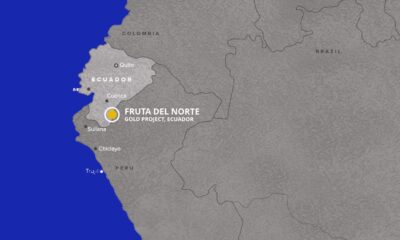
 Nyheter3 veckor sedan
Nyheter3 veckor sedanLundin Gold rapporterar enastående borrresultat vid Fruta del Norte
-
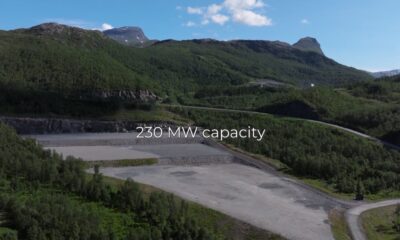
 Nyheter3 veckor sedan
Nyheter3 veckor sedanStargate Norway, AI-datacenter på upp till 520 MW etableras i Narvik
-

 Nyheter3 veckor sedan
Nyheter3 veckor sedanMängden M1-pengar ökar kraftigt
-
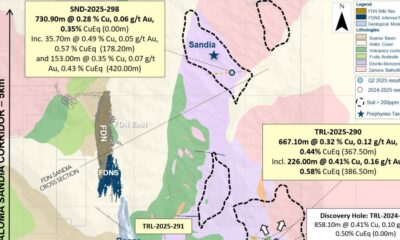
 Nyheter2 veckor sedan
Nyheter2 veckor sedanLundin Gold hittar ny koppar-guld-fyndighet vid Fruta del Norte-gruvan
-

 Nyheter2 veckor sedan
Nyheter2 veckor sedanGuld stiger till över 3500 USD på osäkerhet i världen
-

 Nyheter2 veckor sedan
Nyheter2 veckor sedanAlkane Resources och Mandalay Resources har gått samman, aktör inom guld och antimon
-
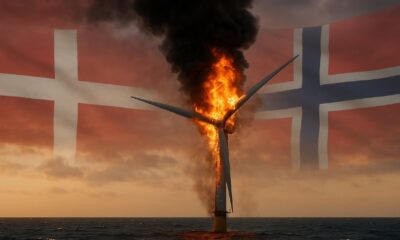
 Nyheter1 vecka sedan
Nyheter1 vecka sedanOmgående mångmiljardfiasko för Equinors satsning på Ørsted och vindkraft




